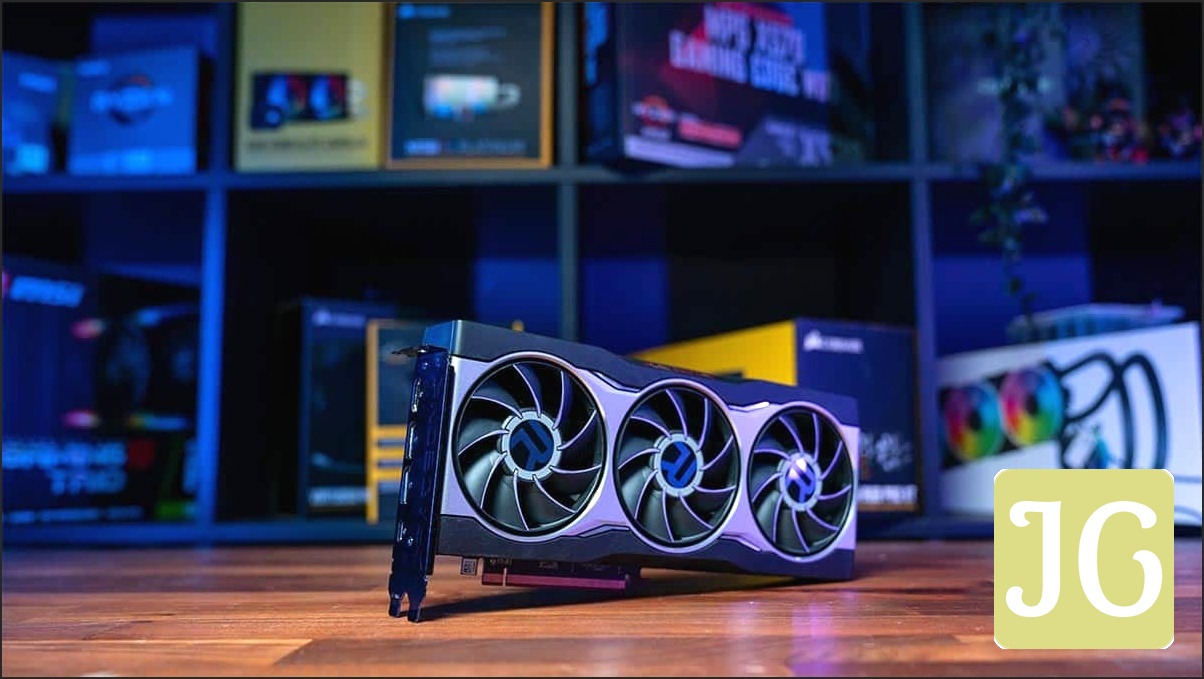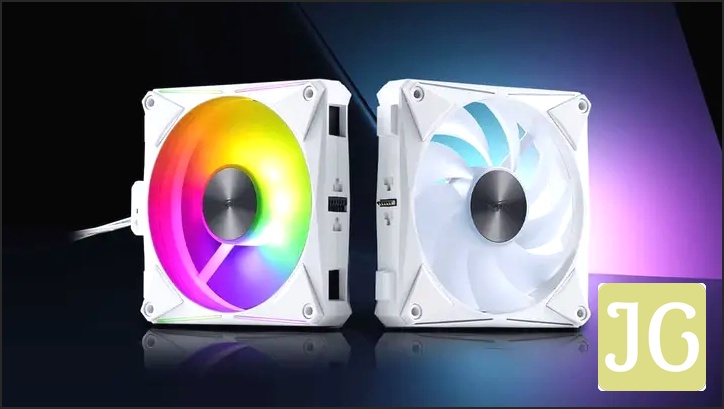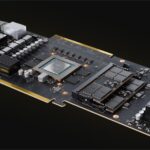The gaming world is abuzz, and not always for the right reasons. AMD’s latest reveal, the Radeon RX 9060 non-XT GPU, is hitting the market in 2025, and while it targets the crucial mainstream segment, one specification has ignited a fierce debate: its 8GB of VRAM. This decision, juxtaposed against earlier, more promising leaked specifications and a clear shift in community sentiment, forces us to ask a critical question. Is 8GB VRAM in 2025 a savvy move to capture the mass market, or a significant detriment to future-proof gaming? We’ll cut through the noise, analyzing the facts, the strategic intent, and the undeniable pulse of the gaming community to determine if this card is a deal or a compromise too far.
The RX 9060 Non-XT: From Leak to Launch – What Changed?
Initial whispers surrounding the AMD Radeon RX 9060 non-XT, primarily through a VideoCardz leak, painted a picture of a potent mid-range contender. These early specifications hinted at a Navi 44 XL die, a robust 2,048 cores, and impressive clock speeds, including a 2,400 MHz game clock and a 2,990 MHz boost clock. The memory configuration, 8GB of 18 Gbps GDDR6 on a 128-bit bus, providing 288 GB/s bandwidth, seemed a reasonable if not generous offering for its expected ~$250 price point. However, as AMD officially unveiled the product page, detailed by TechPowerUp, the reality proved to be a significant downgrade. The official RX 9060 non-XT now features a reduced 28 Compute Units (CUs) and 1,792 Streaming Processors (SPs), down from the initially believed 32 CUs and 2,048 SPs, suggesting it’s likely from a lower bin of the Navi 44 XL die. Crucially, the 8GB GDDR6 VRAM at 18 Gbps on a 128-bit bus was confirmed, solidifying the memory configuration that has become the focal point of community concern.
RX 9060 Non-XT: Leaked vs. Official Specs
A side-by-side look at how the anticipated specifications compared to AMD’s final product page details.
Leaked Specs (VideoCardz)
Official Specs (AMD via TechPowerUp)
8GB VRAM in 2025: AMD’s Stance vs. Gamer Reality
AMD’s strategy with its RDNA 4 architecture, including cards like the RX 9060 non-XT, signals a decisive pivot towards the mainstream market. As AMD’s Senior Vice President Jack Huynh articulated in a Tom’s Hardware interview, his paramount priority is to “build scale” and rapidly capture “40 to 50 percent of the market.” Huynh emphasized a preference for targeting “80% of the Total Addressable Market (TAM)” over a mere 10%, stating that AMD doesn’t aspire to be a company whose products are exclusively for those who can afford “Porsches and Ferraris.” This vision aligns with RDNA 4’s design focus on improving performance and efficiency in high-volume market segments, echoing the approach taken with the original RDNA-powered Radeon RX 5000 series.
This strategic shift directly informs the decision to offer 8GB VRAM options. Frank Azor, AMD’s Chief Architect of Gaming Solutions and Gaming Marketing, defended the choice on X (formerly Twitter) on May 22, 2025. He argued that the “majority of gamers are still playing at 1080p” and, for them, “have no use for more than 8GB of memory.” Azor further highlighted that the most globally played games are often less demanding esports titles or indie games. Supporting this stance, the Steam Hardware Survey for 2025 reveals that over half of gamers (55.27%) still game on 1080p monitors. Furthermore, top GPUs among Steam users include the 4GB GTX 1650 and the 8GB RTX 4060 laptop version, suggesting a significant portion of the market operates with, or is accustomed to, these VRAM capacities.
“The majority of gamers are still playing at 1080p… have no use for more than 8GB of memory.”
Expert Analysis: Samuel Ross on AMD’s Market Strategy & VRAM Choices
Focus: AMD’s Market Strategy & VRAM Choices
AMD’s renewed focus on the mainstream market with cards like the RX 9060 non-XT is a calculated move, directly aligning with Jack Huynh’s stated goal of building scale and reaching a broader audience. By prioritizing high-volume segments with RDNA 4, AMD aims to make PC gaming more accessible, a strategy reminiscent of their successful RDNA 1 (RX 5000 series) launch. The 8GB VRAM choice, while controversial, is likely viewed internally as a necessary compromise to hit an aggressive price point (potentially around $250) that appeals to the vast majority of 1080p gamers, particularly those upgrading from much older hardware like the GTX 1650.
However, this decision is a double-edged sword. While 8GB may suffice for esports titles and less demanding games at 1080p, the rapid increase in VRAM demands from modern AAA titles, especially with ray tracing, makes it a significant future-proofing concern. The market has already shown that 8GB can be a ‘sore spot,’ leading to performance bottlenecks in graphically advanced games. While AMD offers 16GB options for its XT variants, the non-XT’s 8GB might quickly become a limiting factor for gamers seeking to play the latest and most demanding titles beyond 2025, forcing them to compromise on settings or resolution. It’s a strategic gamble that prioritizes immediate market share over long-term performance headroom for a segment of the gaming population.
The Community Speaks: Why Gamers Are Wary of 8GB
Gamer Sentiment: 8GB VRAM in 2025
The PC gaming community’s strong emotional response to 8GB VRAM in new GPUs.
Worry & Skepticism
The community expresses significant worry and skepticism about the future-proofing and longevity of 8GB VRAM for a GPU launching in 2025, fearing it will quickly become obsolete for modern gaming.
“8 GB of VRAM in 2025 is ridiculous. No need to watch the video. People please do not buy this crap.”
Frustration & Disappointment
There is widespread frustration and disappointment with GPU manufacturers, particularly AMD, for segmenting products with seemingly arbitrary VRAM limitations (like 8GB vs. 16GB) and pricing models that make higher VRAM tiers disproportionately expensive.
“I’d assume it only costs them a few bucks more per card to go from 8gb to 16gb but yet they are charging almost 40% more in my area. Almost seems insane to spend 40% more for the same performance just because of the vram.”
Hope & Pragmatism
Despite the prevailing negative sentiment about 8GB VRAM, a significant segment of budget-conscious gamers, often upgrading from much older hardware, expresses hope and pragmatic acceptance that these cards still offer a substantial performance jump for 1080p gaming with adjusted settings.
“Also I’m upgrading from a 1650 super, so even a mid end card is still gonna be a huge jump in terms of what I can play and at what settings.”
TechPowerUp Poll: Mainstream GPU Price-Performance Preferences (July 2025)
Results from a poll of 16,333 readers on their preferred mainstream gaming GPU based on price-performance, highlighting a clear aversion to 8GB cards in the $300-$400 segment.
Notes: Data sourced from TechPowerUp’s July 27th, 2025 Frontpage Poll. Minor/academic options (under 3.1%) excluded for clarity.
Performance Breakdown: Can the RX 9060 Non-XT Deliver?
AMD is positioning the Radeon RX 9060 non-XT as a “1080p powerhouse,” claiming high frame rates at ultra settings without relying on frame generation technologies. Their official figures boast impressive numbers for native 1080p ultra settings: 108 FPS in Assassin’s Creed Mirage, 98 FPS in Call of Duty: Black Ops 6, 153 FPS in DOOM Eternal (RT), and 100 FPS in Resident Evil 4 (RT). While these figures appear strong for a 1080p target, it’s crucial to remember the significant downgrade in Compute Units (28 vs 32) and Streaming Processors (1,792 vs 2,048) compared to its XT sibling. This reduction inherently limits its raw processing power, which could translate to less headroom in future titles or in scenarios where VRAM becomes a bottleneck. Indeed, 8GB of VRAM has already become a “sore spot” in the current GPU market, proving problematic in some of the biggest and most graphically advanced games, often leading to texture pop-in or stuttering as VRAM limits are hit.
RX 9060 Non-XT vs. Competitors: 1080p & VRAM Context
Comparing the RX 9060 non-XT’s advertised performance against its XT sibling and key competitors, with a focus on VRAM implications.
AMD Radeon RX 9060 non-XT
Specs: Navi 44 XL (lower bin), 28 CUs, 8GB GDDR6
Performance Notes: AMD’s official figures at native 1080p ultra without frame generation: Assassin’s Creed Mirage (108 FPS), Call of Duty: Black Ops 6 (98 FPS), DOOM Eternal (RT) (153 FPS), Resident Evil 4 (RT) (100 FPS). While strong for current 1080p, reduced CUs/SPs and 8GB VRAM raise future-proofing concerns for demanding AAA titles.
VRAM Implication: 8GB VRAM is a known ‘sore spot’ for modern demanding games, potentially limiting texture quality and overall performance in future titles.
AMD Radeon RX 9060 XT
Specs: Navi 44 XL, 32 CUs, 8GB/16GB GDDR6 options
Performance Notes: The XT model, AMD’s latest GPU meant to replace the RX 7600 XT, offers higher specs (32 CUs, 2,048 SPs) and often comes with 16GB VRAM options. Benchmarks (as seen in the linked video) show it as a well-rounded product capable of maxing out 1080p gameplay and offering 1440p with high settings, significantly improving RDNA 4 ray tracing performance over RDNA 3.
VRAM Implication: The availability of a 16GB variant addresses future-proofing concerns, making it a more attractive option for gamers worried about VRAM limitations, as reflected in TechPowerUp poll results.
NVIDIA GeForce RTX 5060 Ti
Specs: 16GB GDDR6X ($440 MSRP) / 8GB GDDR6 ($380 MSRP)
Performance Notes: The 16GB version is capable of 1440p-class gaming with high to maxed-out settings and benefits from transformative DLSS 4 with Multi Frame Generation. The 8GB version, however, is considered ‘heavily compromised’ at its price point, eroding its aspirational value as a 1440p + RT product due to VRAM limitations.
VRAM Implication: The stark difference in community preference and performance ceilings between the 8GB and 16GB models of the same GPU underscores the critical importance of VRAM for longevity and higher resolution/setting targets.
Intel Arc B580
Specs: 12GB GDDR6, $250 MSRP
Performance Notes: Offers an excellent value proposition at its price, capable of playing current games at 1080p with max settings. Benefits from Intel’s generational advances in ray tracing hardware, resulting in a low performance-hit from enabling RT.
VRAM Implication: Its 12GB VRAM capacity at a competitive $250 price point makes it a compelling alternative, especially for budget-conscious gamers looking for more VRAM headroom than 8GB cards offer, and it significantly outperformed 8GB RTX 5050 in polls.
The Verdict: Is 8GB Enough for Your Gaming Future?
8GB VRAM: Viability Spectrum for 2025+
A visual guide to where 8GB VRAM stands for different gaming scenarios.
Ideal
Perfect for esports titles (e.g., Fortnite, Palworld, Marvel Rivals), older AAA games, and indie games at 1080p on high or ultra settings. These titles are less VRAM-intensive and will run smoothly for years to come.
Acceptable
Viable for many current AAA games at 1080p, but may require tweaking settings from ultra to high or medium, especially for textures. Upscaling technologies like FSR 4 can help maintain frame rates without pushing VRAM limits too hard.
Challenging
For newer, graphically demanding AAA titles at 1080p ultra, particularly with ray tracing enabled, 8GB VRAM will be a significant bottleneck. Expect stuttering, texture pop-in, and a need for substantial settings compromises to maintain playability. Community sentiment widely regards 8GB as ‘insufficient’ for this category.
Insufficient
Completely inadequate for 1440p or 4K gaming in any modern title, and highly unlikely to cope with future demanding AAA releases at 1080p with high settings or ray tracing. Gamers targeting these experiences should unequivocally look for GPUs with 12GB VRAM or more.
RX 9060 Non-XT: Pros & Cons for the Budget Gamer
Pros
- 1080p Ultra for Less Demanding Titles: Delivers strong performance for esports, indie games, and older AAA titles at 1080p ultra settings.
- Accessible Price Point: Expected to launch around $250, making PC gaming more accessible to a wider audience, aligning with AMD’s mainstream market strategy.
- Significant Upgrade Path: Represents a substantial performance jump for users migrating from much older entry-level cards like the GTX 1650 (4GB).
Cons
- 8GB VRAM Longevity: The primary concern is the card’s future-proofing. 8GB VRAM is already marginal for modern AAA titles and will likely become a major bottleneck in 2025 and beyond.
- Downgrade from Leaked Specs: The official specifications are a notable step down from initial leaks, particularly in Compute Units and Streaming Processors, impacting raw performance potential.
- Community Aversion: Polls indicate a strong aversion among gamers to 8GB cards in the $300-$400 price segment, suggesting a perceived lack of value.
- Superior VRAM Alternatives Exist: Competing cards like the Intel Arc B580 (12GB) offer more VRAM at a similar or lower price, while the RX 9060 XT (16GB) provides a clear upgrade path for those needing more memory.
Key Takeaways for Your Next GPU Purchase
- 8GB VRAM Has Its Niche, But Be Realistic: While the AMD Radeon RX 9060 non-XT can deliver solid 1080p performance for esports, indie games, and many current titles, its 8GB VRAM will be a limiting factor for future AAA games, especially with ray tracing.
- Consider Your Gaming Habits: If you primarily play less demanding titles or are a budget-conscious gamer upgrading from very old hardware, the RX 9060 non-XT could offer a compelling entry point into modern PC gaming.
- The Market Prefers More VRAM: Recent polls clearly indicate a strong consumer preference for GPUs with 12GB or 16GB of VRAM, even at higher price points, due to concerns about longevity and performance in demanding titles.
- Informed Choices are Key: JoltGamer remains committed to providing data-driven insights. Understand the compromises and strengths of any GPU before purchase, ensuring it aligns with your long-term gaming aspirations and budget.
About the Author: Samuel Ross
A veteran of the tech industry, Samuel has the rare ability to connect the dots between a silicon-level innovation and the real-world FPS gamers actually experience. He doesn’t just report on new technology; he explains its context and what it signals for the future of the market. Readers turn to Samuel for insightful analysis that answers not just “what” is happening, but “why” it matters for their next upgrade. His writing is authoritative, insightful, and always focused on the bigger picture.







